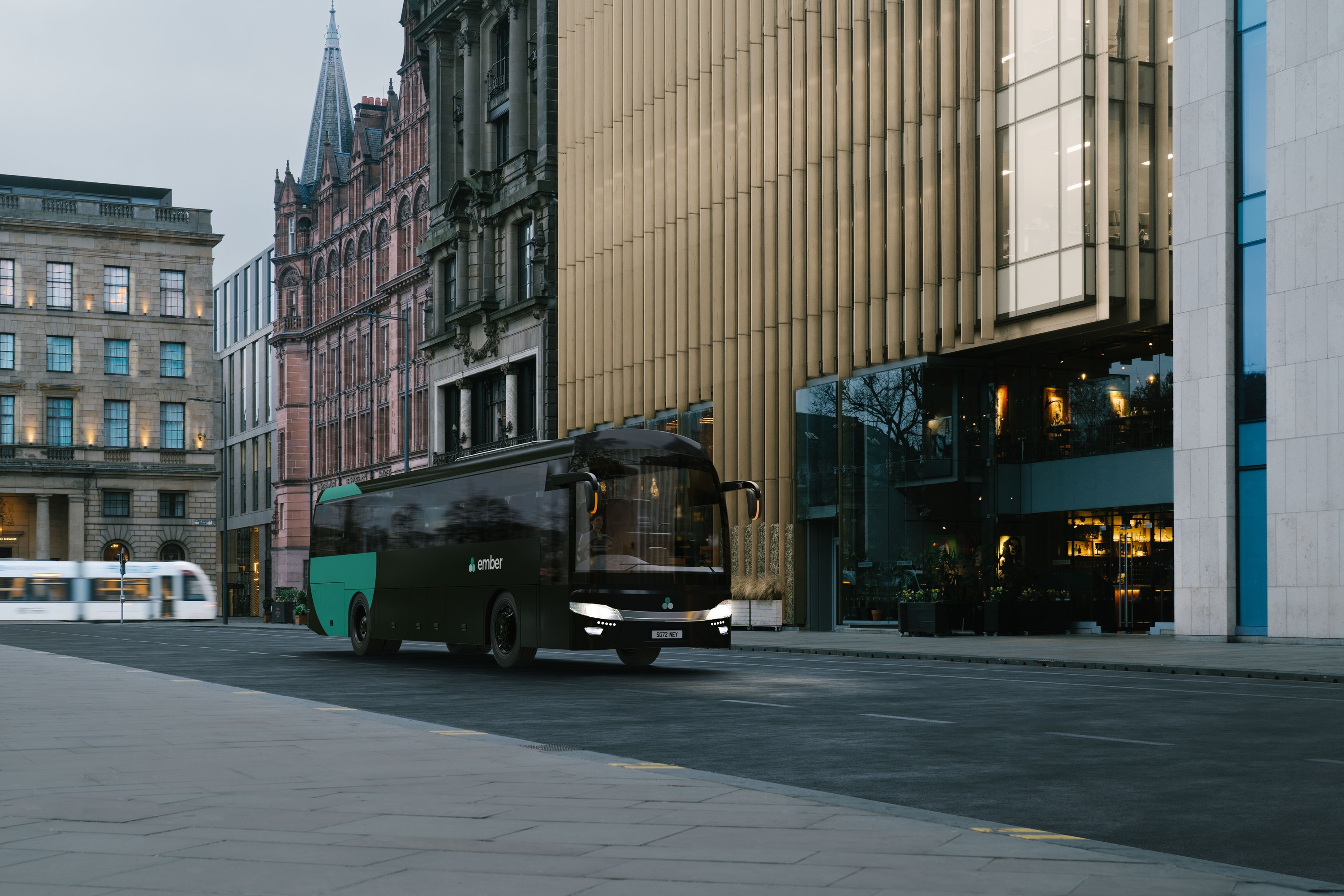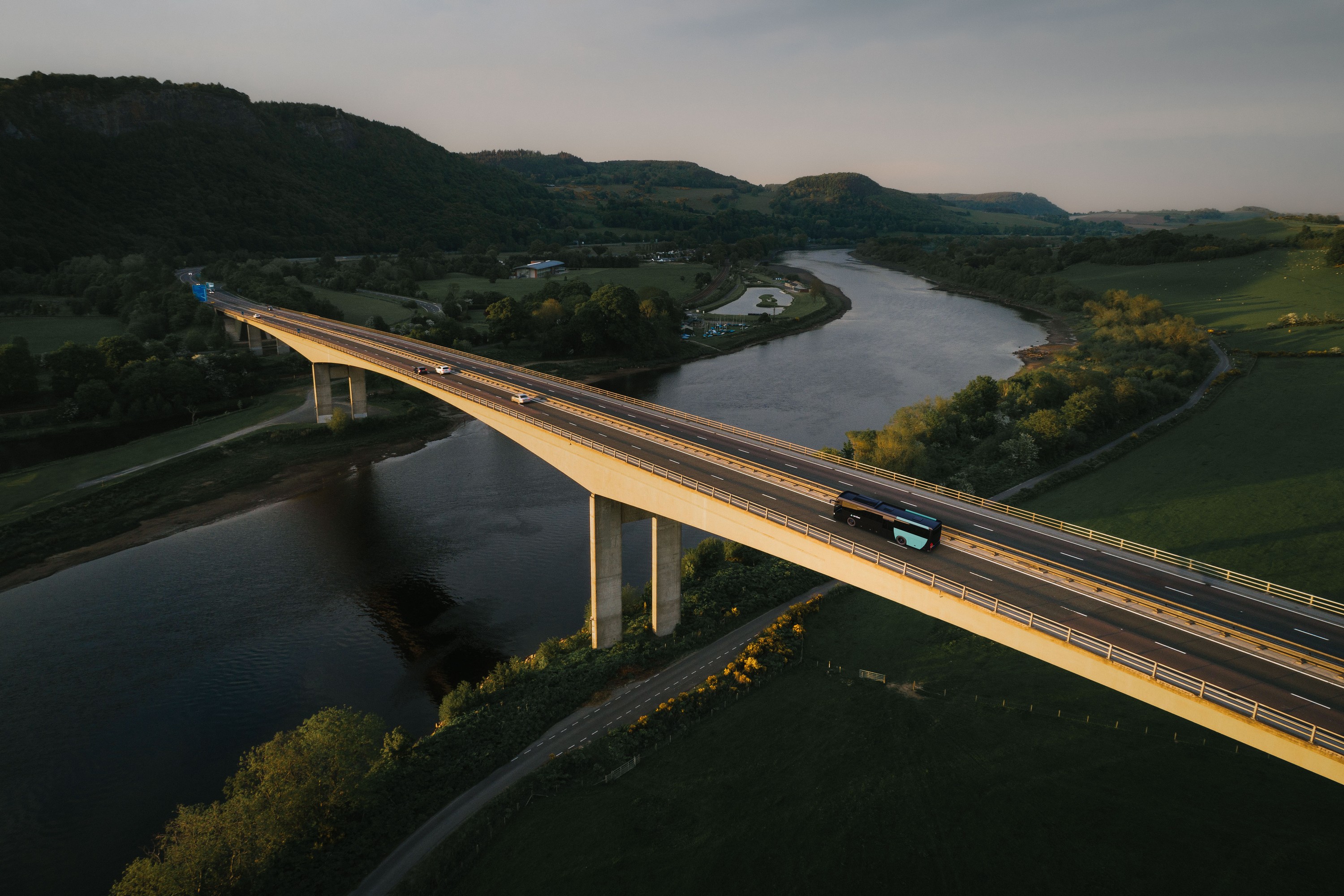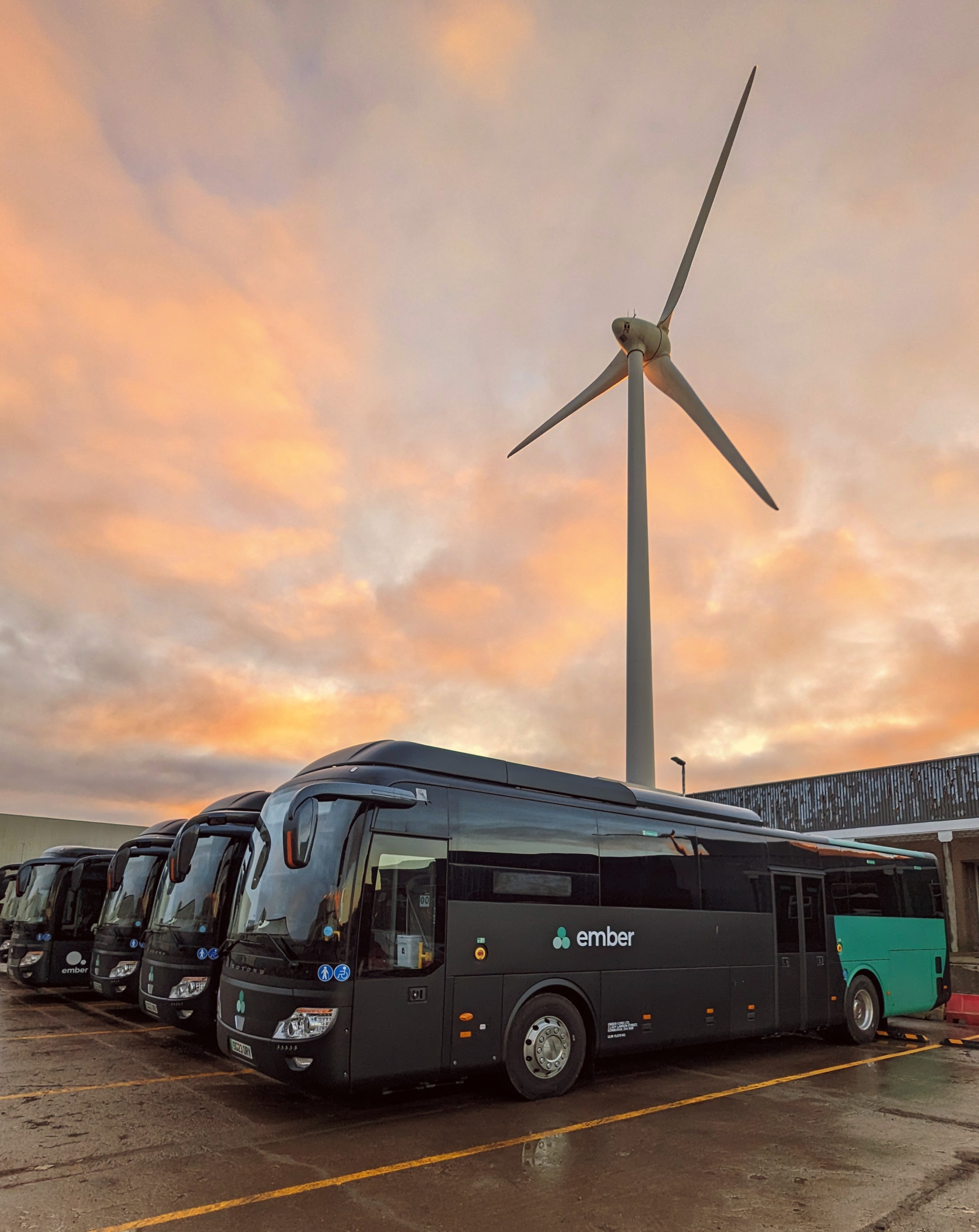Inven Capital backs clean mobility via British zero-emission intercity transport start-up Ember
*Ember runs pro-customer intercity electric bus service in Scotland and is
building its own charging network connected primarily to renewable sources
*Their unique technological platform effectively optimizes routing, recharging, maintenance, and customer service
*Ember started in 2020 with 2 electric buses between Edinburgh and Dundee, now they service over 20 towns with 24 vehicles
*CEZ Group will strengthen its expertise in low-carbon public transportation
*Transport produces approx. 20% of the world's CO2 emissions, almost half of which is passenger transport by road
CEZ Group's investment fund Inven Capital is expanding its portfolio of investments with the British start-up Ember, that takes a complex approach to ensuring emission-free intercity transport service. They combine ecological vehicles, on the development of which they actively cooperate with manufacturers, with their own charging infrastructure powered primarily by renewable resources, and unique tech platform, which optimizes routes, charging and vehicle utilization. Ember is not only looking to grow the fleet of all-electric buses connecting the cities of Edinburgh, Perth, Glasgow and Dundee, but is also considering expanding to other areas. In the investment round co-led by Inven Capital, Ember raised 11 million GBP from investors for further development.

Before creating Ember, Keith Bradbury and Pierce Glennie spent several years travelling around the world. Experience with long-distance buses on all continents led them to the idea of connecting emission-free transport with pro-customer services through a technological platform that will simultaneously ensure the most environmentally and economically efficient use of vehicles as well as a user-friendly approach.
Ember opted for a comprehensive approach, which, in addition to the operation of electric buses, also includes building its own ultra-fast charging network, designing ideal service routes, or working closely with bus manufacturers on the vehicle development. Ember currently has five new charging hubs under parallel development, all modelled on their core hub blueprint. Ember’s Dundee hub can deliver charging speeds of 600 kW to a single bus, with a large proportion of the power coming from the 4 MW of on-site wind turbines. Future hubs are co-located with renewables where possible, further reducing energy costs. Ember will also soon receive the first batch of new generation buses with a battery capacity of 563 kWh and a range of over 500 kilometres.
 Everything is brought together in EmberOS, a proprietary tech platform that orchestrates the operations and allows them to scale growth more easily in the future - according to plans, they expect to double the number of trips over the coming year as the network expands.
Everything is brought together in EmberOS, a proprietary tech platform that orchestrates the operations and allows them to scale growth more easily in the future - according to plans, they expect to double the number of trips over the coming year as the network expands.
“CEZ significantly supports the development of e-mobility in the Czech Republic. We currently operate over 670 charging stations across the country, participats in the electrification of public transport in cities and help companies with the introduction of e-mobility in their fleets. Logically, we are also interested in know-how from abroad. By entering Ember, Inven Capital builds on its previous successful investments in clean mobility. The electrification of transport is one of the key tasks of the near future, and CEZ, as a major energy player, naturally wants to lead the way. Ember impressed us with its comprehensive solution, which gives it a strong foundation for future growth," said Tomáš Pleskač, member of the board of directors and director of the new energy division.
The 11 million GBP raised in a Series A will be used to expand Ember’s electric bus network, deploy new renewables-powered transport hubs and invest in the EmberOS platform. In addition to Inven Capital, the AENU and 2150 funds, which specialize in supporting climate-conscious start-ups, also participated in the round.
"Ember proves that by cleverly combining electrification, digitization and a strong pro-customer approach, it is possible to make people prefer greener public transport to traveling by car. Given Europe's decarbonisation ambitions, such an approach is a great inspiration for other companies as well. We are excited to be a part of Ember's mission to revolutionize transportation," said Inven Capital director Petr Míkovec.
“We continue to add layers of data into the EmberOS platform that enable the system to always know what’s going on. That means things like the live vehicle location, current traffic conditions, nearby bus lanes, battery cell temperatures and the health of our chargers. When you put all of that together you can really bring down operational costs and deliver a better experience,” says co-founder of Ember Pierce Glennie.
According to the founders, the Ember technology platform is built in such a way that it can be transferred to other countries with only minor modifications to the system. The electric buses in their current fleet have a range of around 300 kilometres and take just over two hours to recharge. They stop in smaller towns where public transport does not provide enough connections to larger cities.
Clean mobility in CEZ
In addition to the systematic construction of charging infrastructure for passenger electric cars across the Czech Republic, CEZ Group also supports the transition to clean mobility in other ways. It helps with the development of emission-free public transport in cities. These include, for example, the preparation of utility networks, modification of substations, construction of technical facilities for recharging electric buses, or preparation of technical documentation.